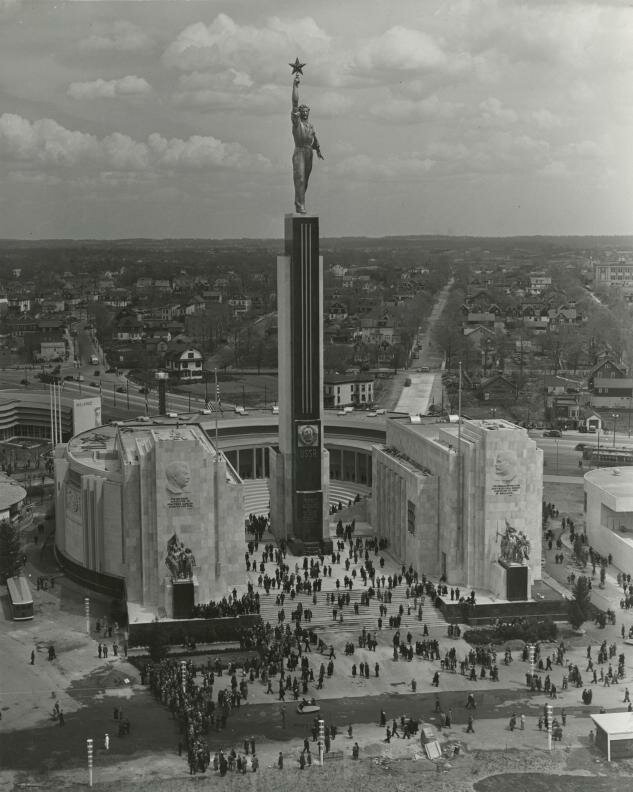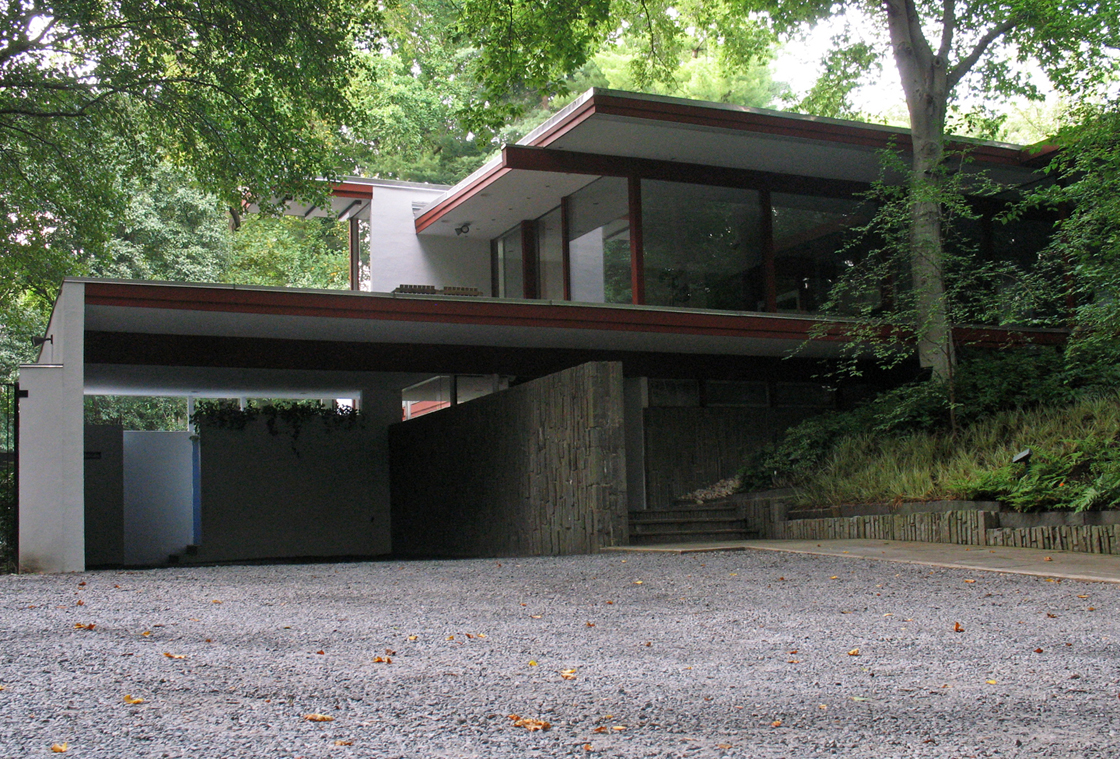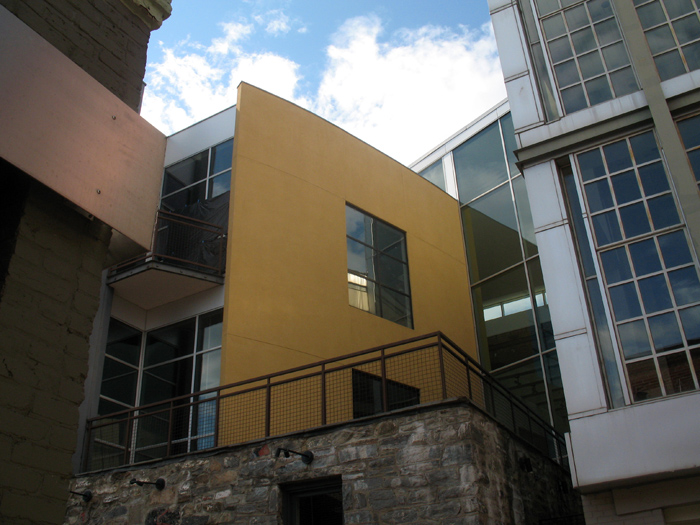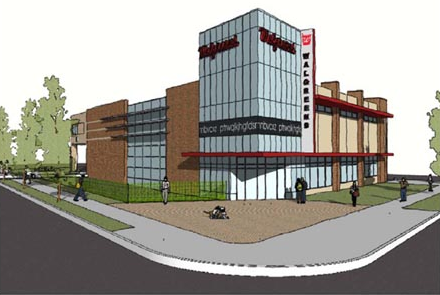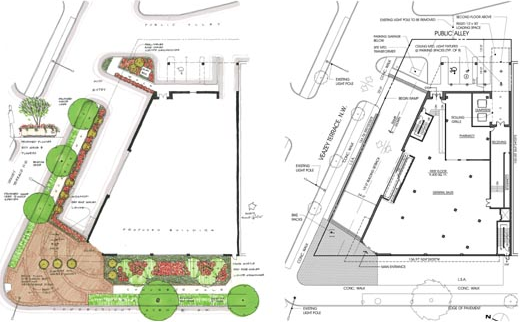So, thanks to Arkhobzor, take a look at this forgotten gem: the Soviet Pavilion at the 1939 New York Worlds Fair.
The building is pretty exemplary of Stalinist architecture as executed in a post-constructivist style. Designed by Boris Iofan, it fulfills the representational goals of Socialist Realism with marble statuary, murals, and an amphitheater for informational films. The composition is still rationalist, with a simple circular plan opened unclassically by intersecting it with a square. Massive pylons turn into entry propylea, facing a courtyard and a blood red granite tower supporting a statue dubbed “Joe the Worker” in the American press.
The original plan called for a muscular man to be clad like a classical sculpture, holding up a red star. That changed in the execution, with a man in a jumpsuit replacing the Stakhanovite demigod.
Inside the building, there were dioramas, paintings, and models that showed off the cultural and economic might of the prewar Soviet Union. Perhaps most notably, it included a full-scale mockup of the spectacular moderne Mayakovskaya metro station, mirrored to create the effect of repeated bays. Also present were statues of Stalin and Lenin. The statue of Stalin is a smaller version of the one that stands in the Muzeon park, defaced.
I don’t have much else to say, but I’d take a look at the following posts about the building for the incredible images.
- The NYPL’s “Rise and Fall of Joe the Worker.“
- Arkhobzor’s post.
- Soviet Architecture’s post.
Looking back after the Cold War and its end, it feels pretty strange that something this thoroughly Stalinist ever stood on US soil.
